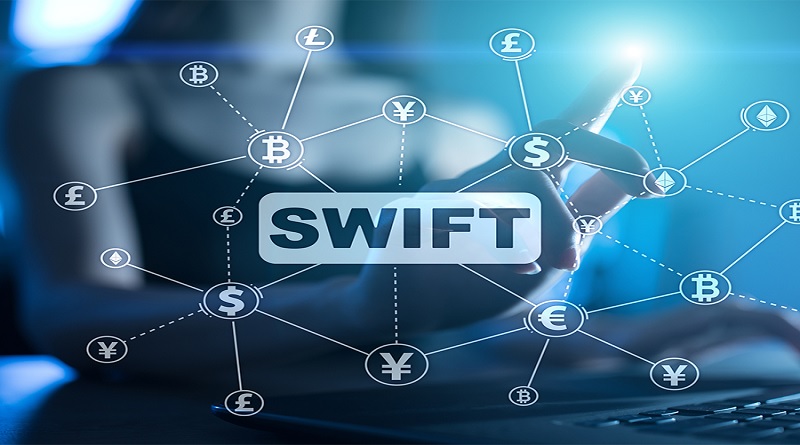WHAT IS THE SWIFT SYSTEM: WHAT BUSINESSES NEED TO KNOW ABOUT THIS MESSAGING SYSTEM
Small businesses depend on financial intermediaries like banks to manage their money and facilitate wire transfers to pay their workers, suppliers, and manufacturers overseas. In turn, banks use SWIFT to process most of these cross-border payments between firms banked in different countries. This article lists what you need to know about the SWIFT messaging system.
SWIFT Stands For Society For Worldwide Interbank Financial Telecommunications
SWIFT stands for Society for Worldwide Interbank Financial Telecommunications and is the world’s leading provider of secure financial messaging services. The society was founded in 1973 by 239 banks from 15 countries to replace the old system, Telex, to better communicate instructions related to cross-border transfers.
Today, SWIFT’s messaging services are used by more than 11,000 financial institutions in more than 200 countries and territories worldwide, recording an average of 42 million FIN messages per day.
How Does The SWIFT System Work?
SWIFT is not a payment network that transfers money between banks, rather, it is a messaging network. SWIFT plays the role of a messenger as it passes secure messages between banks quickly and accurately.
Money is not moved in the physical sense; rather, it is transferred through a ledger entry in the form of double-entry accounting between banks. All banks in the SWIFT system have a code or number, made up of 8 to 11 characters, that identifies who they are. For example, OCBC SWIFT code is OCBCSGSG.
Continuing with our example, an OCBC customer wants to send money to a relative in the United States of America who has a banking account with Citibank (US). The local customer logins to OCBC’s platform and enters the overseas customer’s banking details like the bank account number, branch name and code. After that, OCBC will send a SWIFT message to Citibank (US), which will be verified and cleared by Citibank (US) and the overseas customer will get the amount credited into their account.
Senders of SWIFT messages can be confident that their messages will be acted upon, as the receiving party (banks) will be contractually liable if they fail to respond.
SWIFT Is A Cooperative Owned By 3,500 Shareholders And Is Overseen By The National Bank Of Belgium
SWIFT is a cooperative company under Belgium law and is owned and controlled by its approximately 3,500 shareholders financial institutions across the world.
SWIFT is overseen by the Central Banks of the G-10 countries and from major economies like the Reserve Bank of Australia, People’s Bank of China, and the Monetary Authority of Singapore to name a few including the European Central Bank and with its lead overseer being the National Bank of Belgium.
It acts as a neutral party to sanctions but compiles with the related European Union regulations as it is incorporated under Belgium law.
How Secure Is The SWIFT System?
Despite playing a critical role in the financial system of the world and its emphasis on security, SWIFT does not have a fool-proof network.
There have been a couple of notable incidences involving emerging banks, including a cyber-attack in 2015 on a SWIFT bank customer in Ecuador, in which hackers stole US $9 million, and another in 2016, when hackers stole US $81 million from Bangladesh’s Central Bank.
SWIFT’s authentication process is designed to check that a message’s sender and receiver are who they say they are. But if hackers gain control of the user’s credentials, SWIFT may not be able to detect the intrusion until it is too late.
After these incidences, SWIFT launched the Customer Service Security Programme (CSP) to promote robust security standards by introducing security-enhancing tools and increasing the scope and quality of cyber threat intelligence sharing.
There Are No Real Alternatives To SWIFT
Following Russia’s invasion of Crimea in 2014 and with threats of SWIFT sanctions, the Central Bank of Russia launched its own messaging system called the System for Transfer of Financial Messages or SPFS. However, it reportedly has only over 400 users, mostly domestic based banks and does not have the reach or coverage to break SWIFT’s dominance.
The People’s Bank of China also launched an alternative payments and communications system in 2015 called the Cross-Border Interbank Payment Systems or CIPS. It was part of China’s efforts to increase the global use of its yuan currency, especially amongst those involved in the Belt and Road initiative. According to the CIPS, about 1,190 financial institutions in 103 countries and regions are connected to the system. However, those numbers also pale in comparison to those of SWIFT.
The rise in the innovation of digital currencies and the underlying blockchain technology have been touted to break SWIFT’s dominance over cross-border payments. However, restrictive legislation and slow adoption by major financial institutions have not made this a viable alternative for now.
As such, SWIFT continues to play a key role in the world of finance and trade.
Need Financing Support During This Period?
SMEs can enjoy extra financing support of up to $3 million through the Temporary Bridging Loan Programme when you apply online with OCBC. Terms and conditions apply.








